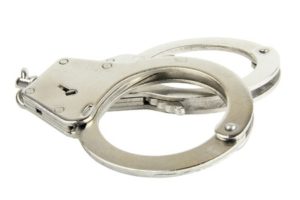 The police arrested defendant Habeeb Robinson for killing a victim. According to the affidavit, two eyewitnesses saw the shooting. One identified defendant from a six-person photo array; the other identified a photo of defendant. The Preliminary Law Enforcement Incident Report (PLEIR) adds that a surveillance camera recorded the incident. The pending complaint charges defendant with first-degree murder and weapons offenses. The PSA recommended that defendant not be released.
The police arrested defendant Habeeb Robinson for killing a victim. According to the affidavit, two eyewitnesses saw the shooting. One identified defendant from a six-person photo array; the other identified a photo of defendant. The Preliminary Law Enforcement Incident Report (PLEIR) adds that a surveillance camera recorded the incident. The pending complaint charges defendant with first-degree murder and weapons offenses. The PSA recommended that defendant not be released.
The State moved for pretrial detention. At the hearing, the State relied on the hearsay statements in the affidavit of probable cause (which refer to the two eyewitnesses); the presumption of detention under N.J.S.A. 2A:162-19(b)(1) (based on the murder charge); defendant’s criminal history and record of court appearances; and the release recommendation in the PSA. The trial court directed the State to disclose the two witness statements, the photos used in the identification process, the surveillance video, and any incident report that the police prepared.
The Appellate Division affirmed the trial court’s order. The New Jersey Supreme Court agreed to hear the State’s motion for leave to appeal on an accelerated basis.
By a six to one majority, The New Jersey Supreme Court held that both the trial court and the Appellate Division directed the State to disclose the statements of two eyewitnesses, photos used in the identification process, any incident report of the crime prepared by the police, and a surveillance video. Rule 3:4-2(c)(1)(B) required disclosure of the reports and the photos but not the video. The Court also clarifies and reframes the Rule to help ensure that it strikes the proper balance between two important concerns: a defendant’s liberty interest and the State’s ability to seek to detain high-risk defendants before trial.
Thoughtful people have wrestled over the scope of discovery that should be required at a detention hearing. A number of considerations factor into the ongoing debate: the language of the statute; important concerns for public safety; and the defendants’ liberty interests. In addition, the discovery rule should not impose impractical demands on law enforcement. The administration of justice calls for fair and efficient proceedings. In the case of a detention application, the focus is not on guilt, and the hearing should not turn into a mini-trial.
To balance those aims, the Court sets forth principles to govern the disclosure of evidence at a detention hearing:
(1) because the Act calls for a determination of probable cause and an assessment of the risk of danger, flight, and obstruction, which may include consideration of the nature and circumstances of the offense and the weight of the evidence, discovery should likewise be keyed to both areas; (2) the complaint, (3) the PSA, (4) the affidavit of probable cause, and (5) any available PLEIR must be disclosed; (6) all statements and reports relating to the affidavit of probable cause should be disclosed; (7) all statements or reports that relate to any additional evidence the State relies on to establish probable cause at the detention hearing should be disclosed; (8) statements and reports related to items that appear only in the PLEIR need not be disclosed; (9) statements and reports relating to the risk of flight, danger, and obstruction, which the State advances at the hearing, should be disclosed; the phrase “statements and reports” (10) refers to items that exist at the time of the hearing and does not encompass video and audio files as a general rule, but does (11) encompass reports that are in the possession of the prosecutor, law enforcement officials, and other agents of the State; and (12) all exculpatory evidence must be disclosed. The phrase “relating to” is repeated several times in the itemization of discoverable materials. It is a vague phrase and will likely be the subject of future litigation.
